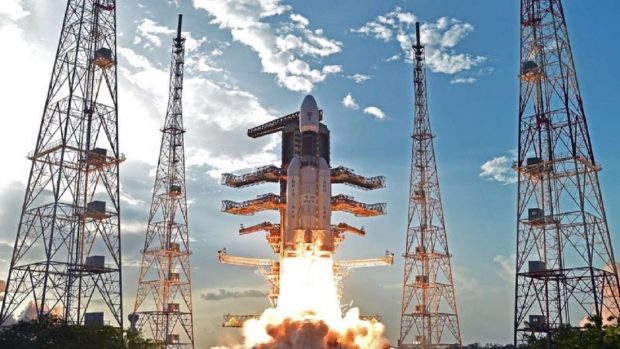
Chandrayaan-2 will have 13 payloads: ISRO
Team Udayavani, May 16, 2019, 2:09 PM IST

Image for Representation
Bengaluru: India’s second Moon mission that is planned for a July launch will have 13 payloads and one passive experiment from American space agency NASA, the Indian Space Research Organisation (ISRO) said on Wednesday.
“Thirteen Indian payloads (8 on orbiter, 3 on lander and 2 on rover) and one passive experiment from NASA,” ISRO said in a mission update, but did not specify them or their objective.
The spacecraft with a mass of 3.8 tonnes has three modules–Orbiter, Lander (Vikram) and Rover (Pragyan).
All the modules are getting ready for Chandrayaan-2 launch during the window of July 9 to July 16, 2019, with an expected Moon landing on September 6, the space agency had said earlier this month.
The orbiter will orbit 100 km from the lunar surface, while lander (Vikram) will do the soft landing near the south pole of moon, and Rover (Pragyan) will conduct in-situ experiments.
The orbiter and lander modules will be interfaced mechanically and stacked together as an integrated module and accommodated inside the GSLV MK-III launch vehicle, ISRO has said, adding the rover is housed inside the lander.
After launch into earth-bound orbit by GSLV MK-III, the integrated module will reach Moon orbit using orbiter propulsion module, and subsequently, lander will separate from the orbiter and soft land at the predetermined site close to lunar South Pole.
Further, the rover will roll out for carrying out scientific experiments on the lunar surface, ISRO has said, noting that instruments are also mounted on lander and orbiter for carrying out scientific experiments.
ISRO Chairman K Sivan had said in January, “We are going to land at a place where nobody else has gone-the Moon’s South Pole… it is unexplored region.”
Chandrayaan-2 mission, is an advanced version of the previous Chandrayaan-1 mission about 10 years ago.
Chandrayaan-1 had 11 payloads- five from India, three from Europe, 2 from USA and 1 from Bulgaria, and the mission had the credit for discovery of water on the lunar surface.
The 1.4 tonne spacecraft was launched using PSLV and the orbiter had orbited 100 km from the lunar surface
Udayavani is now on Telegram. Click here to join our channel and stay updated with the latest news.
Top News
Related Articles More

Three persons run over by train in Bengaluru

IT sleuths threatening raided leaders to claim money belongs to me, Cong: DK Shivakumar

MCC violation: Karnataka HC grants interim relief to Shivakumar

Orange alert: Karnataka State Disaster Management cell issues animated advisory

PM Modi to begin 2-day whirlwind campaign in Karnataka from Apr 28
MUST WATCH
Latest Additions

NIA arrests key accused in 2023 attack on Indian High Commission in London

Three persons run over by train in Bengaluru

Indian nationals aboard ‘MSC Aries’ in good health, return delayed due to technicalities: MEA

Husband has no control over wife’s ‘stridhan’: SC

IT sleuths threatening raided leaders to claim money belongs to me, Cong: DK Shivakumar





















